Located in the northeast New England region of the United States, Vermont is also nicknamed “Green Mountain State.” Indigenous people have lived in this region for the past 12,000 years. Vermont does not particularly have a rich fossil history. Yet, paleontologists have made some major discoveries of ancient animals throughout the state. There are no geologic deposits in Vermont that date back to the Late Paleozoic or Late Mesozoic periods. This means there’s practically no record of dinosaurs that lived in Vermont.
Nevertheless, that doesn’t mean there weren’t any ancient animals in the Green Mountain State. Although scientists have never found (and may never find) dinosaur fossils in Vermont, here’s a list of other prehistoric animals that lived in the state and where they found their fossils.
Crinoids
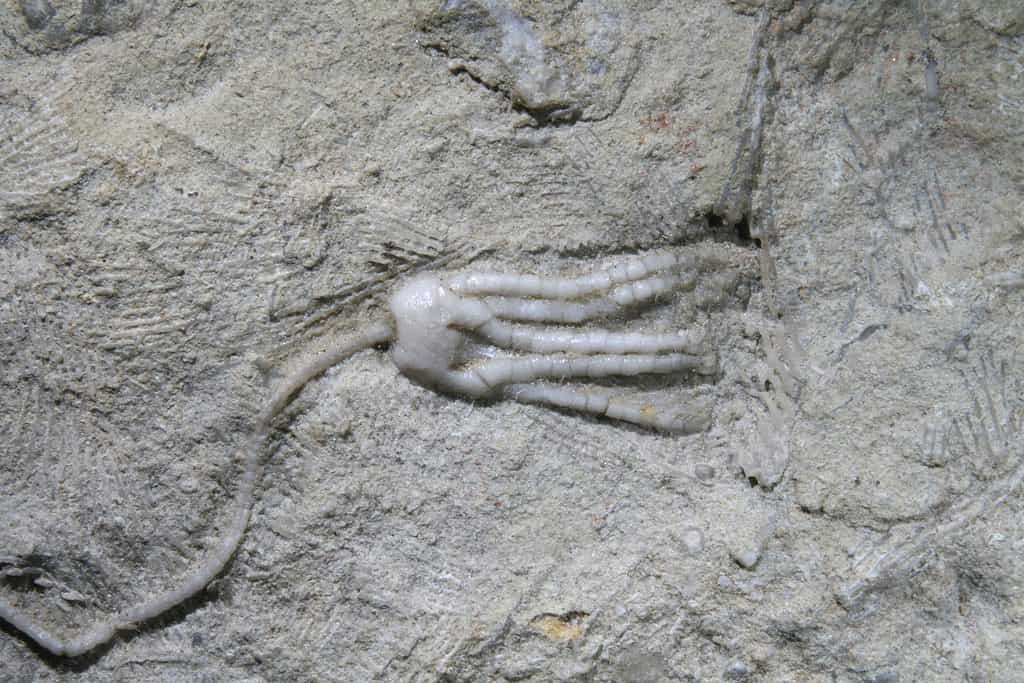
Sea lilies is another name for crinoids.
©Michael LaMonica/Shutterstock.com
Crinoids are primitive marine creatures. Also known as sea lilies, crinoids belong to the same phylum as starfishes, sea urchins, and sea cucumbers. A defining feature of crinoids is the dorsal positioning of their mouths. The anus is on the oral disc close to the mouth, and it is connected to a U-shaped gut.
During the Ordovician Period (about 485.4 million years ago), the current location of Vermont was under a shallow sea. Crinoids were abundant in this prehistoric sea, leaving behind several remains that you can still see near Northfield in Washington County. Crinoid fossils are also abundant north of Montpelier, Vermont.
The Charlotte Whale
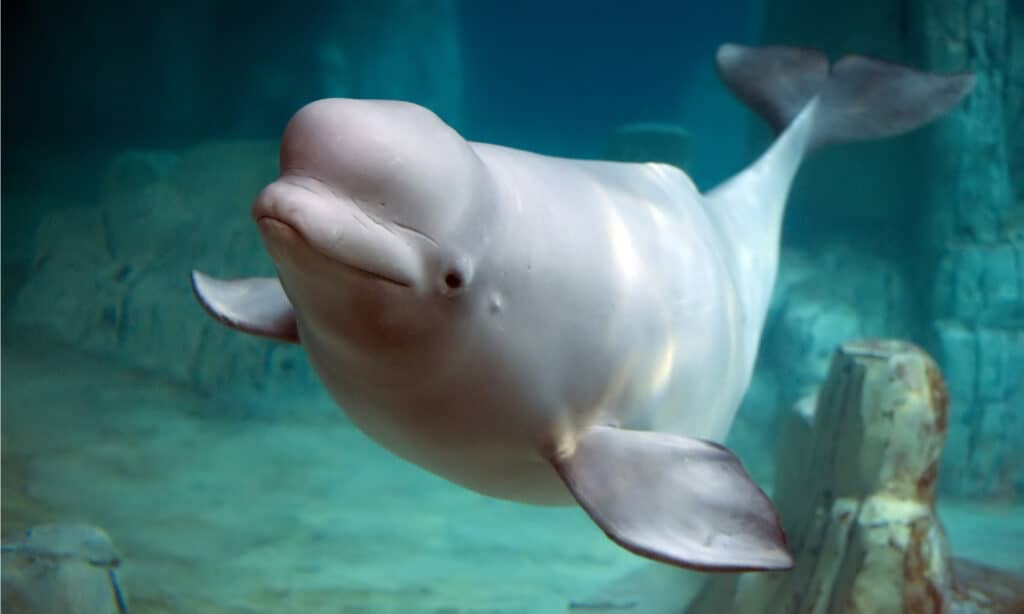
The Charlotte whale was a beluga whale (pictured), and workers in Vermont discovered its fossil in 1849.
©Luna Vandoorne/Shutterstock.com
Dinosaurs probably didn’t live in Vermont, but you’ll find several aquatic monsters here. The Charlotte whale is the remains of a beluga whale that was unearthed from mud deposits in Vermont. In 1849, construction workers in Vermont uncovered the unusual bones of an animal they had never seen before while constructing the first railroad in the state.
A researcher by the name of Zadock Thompson, who was present during the discovery, realized almost immediately that the workers had made an unexpected discovery. He then proceeded to meticulously gather all of the bone fragments and bring them back to his laboratory. The fossil was identified by Thompson as that of a miniature white whale, also known as a “beluga” (Delphinapterus leucas).
After the fossil’s discovery, it was assembled by Albert David Hager. The fossil’s discovery at a location hundreds of miles from the nearest ocean provided further proof to geologists that Vermont was once covered entirely by an ancient body of water known as the Champlain Sea.
Today, the fossil of the Beluga whale is still on display at the Perkins Geology Museum in Vermont. It is the official state fossil of Vermont. The beluga whale belongs to the genus Delphinapterus. Although the bone discovered in 1849 belonged to a specimen dating back to the last ice age (11,000 years ago), the beluga whale still lives to date.
Mastodons
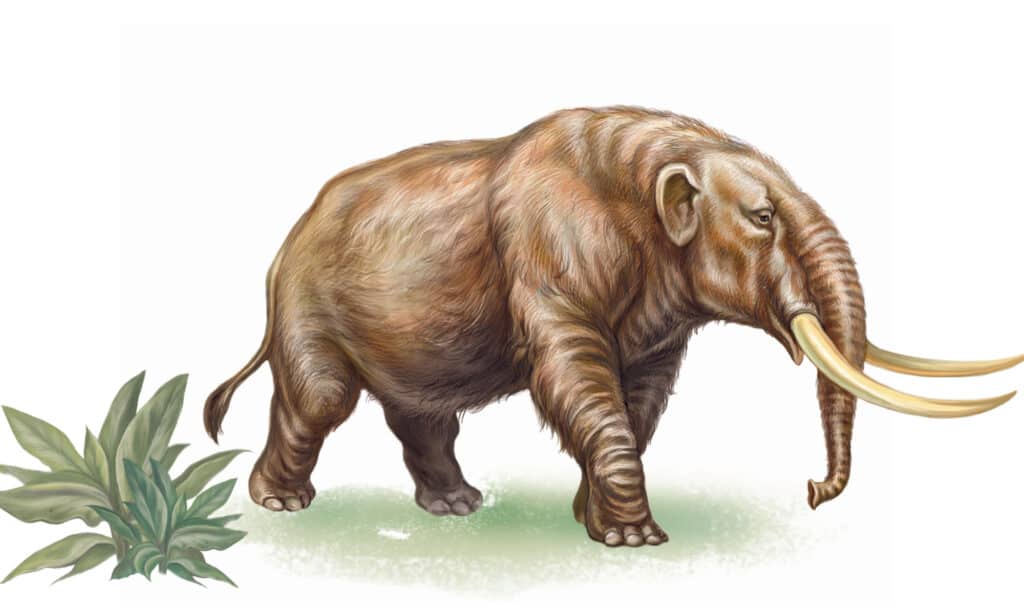
A year earlier than the Charlotte whale fossil’s discovery and during the construction of the same railroad, Vermont workers found a mastodon fossil.
©Liliya Butenko/Shutterstock.com
Mastodons were obviously not dinosaurs, but they were among the largest animals that lived in Vermont. They belong to the extinct Mammut genus (family Mammutidae). In the Late Miocene or Late Pliocene, mastodons roamed the continents of North and Central America. They lived there until the end of the Pleistocene — between 10,000 and 11,000 years ago — when they became extinct. These giant creatures lived in groups in the ancient forests of Vermont. In contrast to the Columbian mammoth, which often grazes, these animals favored a browsing diet.
In the summer of 1848, the mastodon fossil, which consisted of at least one tooth (molar), at least one tusk, and an undetermined number of bones, was purportedly unearthed. Workers on the Rutland and Burlington Railroad made the discovery when they were performing maintenance work to the east of the Summit Station. The discovered fossil was placed at the Field Museum of Natural History, Vermont.
Experts think another elephant-like creature, the wooly mammoth, may have lived in Vermont. However, no fossils have been found to confirm this theory. Also, paleontologists have yet to unearth an intact specimen of a mastodon in any part of Vermont. Still, the fossils prove they lived here at some point in history.
Sea Mink
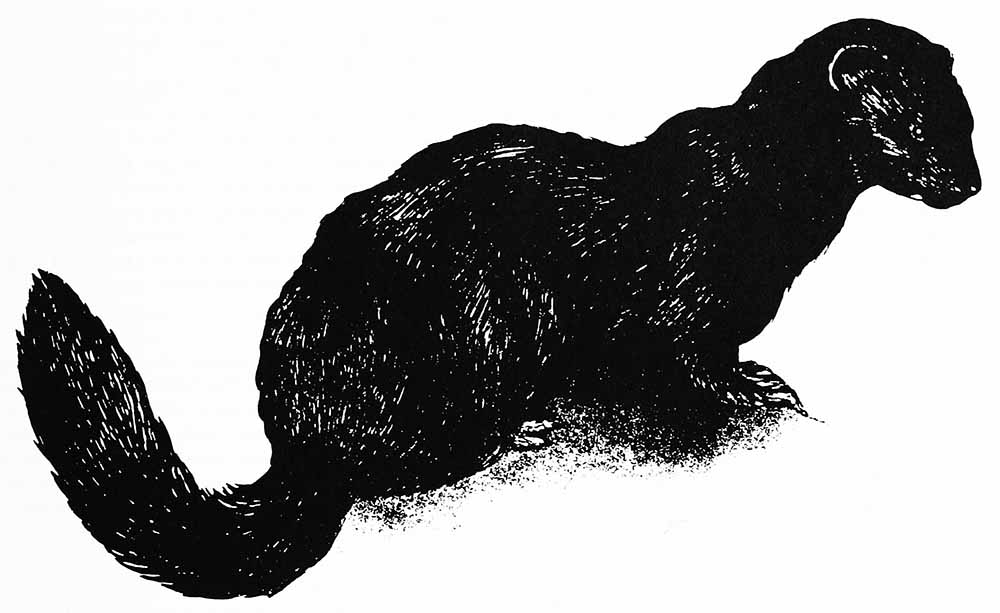
Closely related to the American mink is the sea mink, which left fossils in Vermont.
©Internet Archive Book Images, no known copyright restrictions (public domain) – License
The sea mink was a species of mink that thrived on the eastern coast of North America along the Gulf of Maine on the New England seaboard before it went extinct. It was closely related to the American mink. However, there’s an ongoing discussion on whether or not the sea mink should be classified as a subspecies of the American mink or a species on its own.
The larger size of this mink is the primary differential that has led to its classification as a unique species, but the redder fur and other characteristics have also been noted. Bone pieces discovered in Native American shell middens are all that remains of this creature in Vermont. We can only guess its true size based on the few fragments of teeth that have been found. In 1903, ornithologist Daniel Webster Prentiss first described the sea mink long after it had gone extinct. Fur trader accounts and a skull fragment discovered among Native American remains form the basis of his description. The genus Neogale is made up of the sea mink as well as four additional species.
Mesonacis vermontanus

The
Mesonacisis an extinct genus of trilobites. Trilobite fossils are pictured.
©scigelova/Shutterstock.com
Mesonacis (synonym Olenellus) is an extinct genus of the earliest marine arthropods — trilobites. Its species have an average size of about two inches long. It lived during the Botomian and Toyonian phases of the Cambrian Period, which occurred between 522 and 510 million years ago. The fossils of this marine invertebrate were discovered by geologists near Georgia Center, Vermont. The specific name vermontanus is a reference to the State of Vermont, where this fossil was collected.
Platygonus
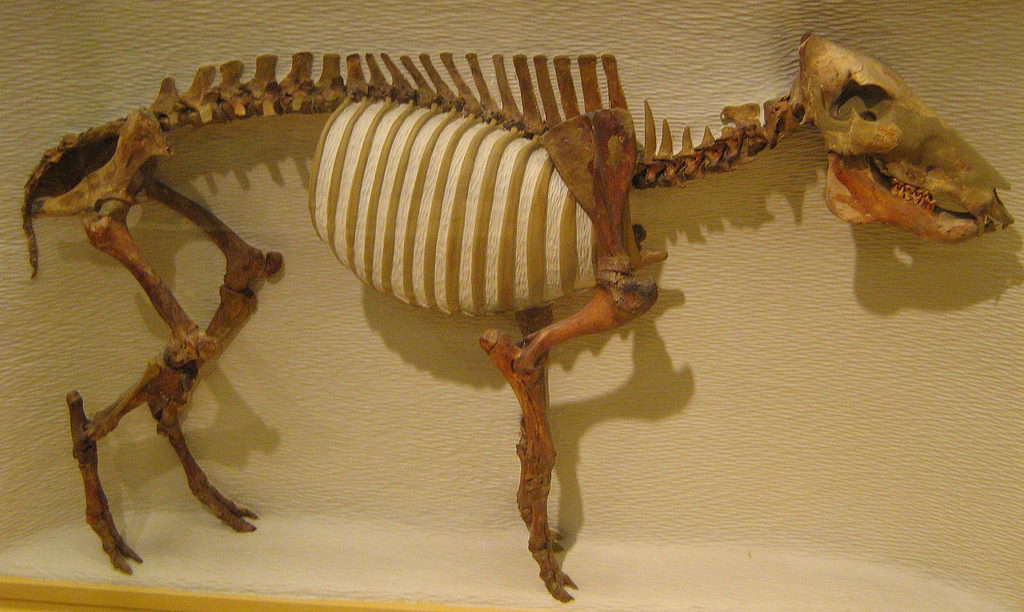
The average
Platygonuswas a little over 3.3 feet in length. It lived in North America during the Pleistocene epoch.
©David Starner/Wikimedia Commons – License
Platygonus is an extinct genus of herbivorous peccaries of the family Tayassuidae. It was present in North and South America throughout the Miocene and Pleistocene epochs. This animal looks like the European wild boar in terms of size.
Most Platygonus species were about 3.3 feet in body length, making them roughly the same size as modern peccaries (especially the giant peccary). The long legs of this ancient herbivore made it an agile runner.
They also had long tusks and a nose that resembled that of a pig, both of which were likely used for defense against various predators. According to the locations where the bones of this species were found, it was hypothesized that they lived in environments such as forests, shrublands, savannas, and, most likely, caves. This mammal was probably food for Pleistocene-era carnivores.
Maclurites

A common fossil in Vermont is that of the
Maclurites, an extinct genus of gastropod snails.
©Hectonichus/Wikimedia Commons – License
Macluritidae, an extinct genus of gastropod snails, are commonly found as fossils in Vermont. They existed during the Ordovician Period, about 450 million years ago, when the Vermont area was submerged beneath a shallow ocean. Land-dwelling vertebrates had not yet evolved at the time.
Macluritidae are easy to identify because of the coiling pattern of its shell. Macluritidae are also distinguished by the presence of a second shell, known as operculum, which covered the opening in the main body shell. The genus got its name in honor of William Maclure, who drew the very first geologic map of the United States back in 1809.
Conclusion
Like many of the other states in New England, the fossil history of Vermont is very sparse. We do not know for sure if dinosaurs lived around the Green Mountains of Vermont, but we do know that many other prehistoric animals found home in this state at various points in history. There’s a good chance some of them included dinosaurs. However, we currently have no physical evidence for their existence.
Summary of Ancient Animals That Lived in Vermont
| Rank | Animal | Type of Animal |
|---|---|---|
| 1 | Crinoids | Primitive marine creatures, also called “sea lilies” |
| 2 | Charlotte whale | Beluga whale (also called miniature white whale) |
| 3 | Mastodon | Extinct Mammut genus |
| 4 | Sea Mink | Species of mink related to North American mink |
| 5 | Mesonacis vermontanus | Extinct genus of marine arthropods |
| 6 | Platygonus | Extinct genus of herbivorous peccaries |
| 7 | Maclurites | Extinct genus of gastropod snails |
The photo featured at the top of this post is © Jonathan D. Wahl/Shutterstock.com
Thank you for reading! Have some feedback for us? Contact the AZ Animals editorial team.






